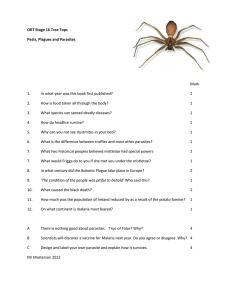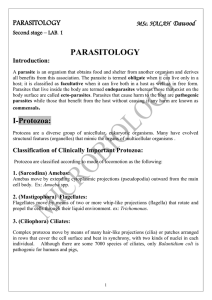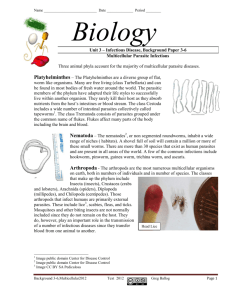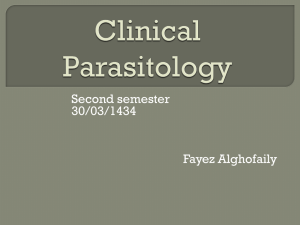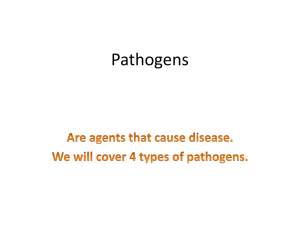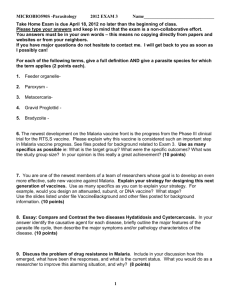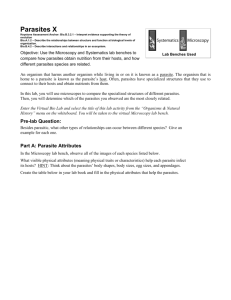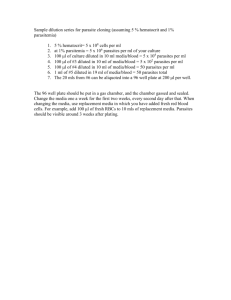Chapter 18: Eukaryotic Microorganisms
advertisement
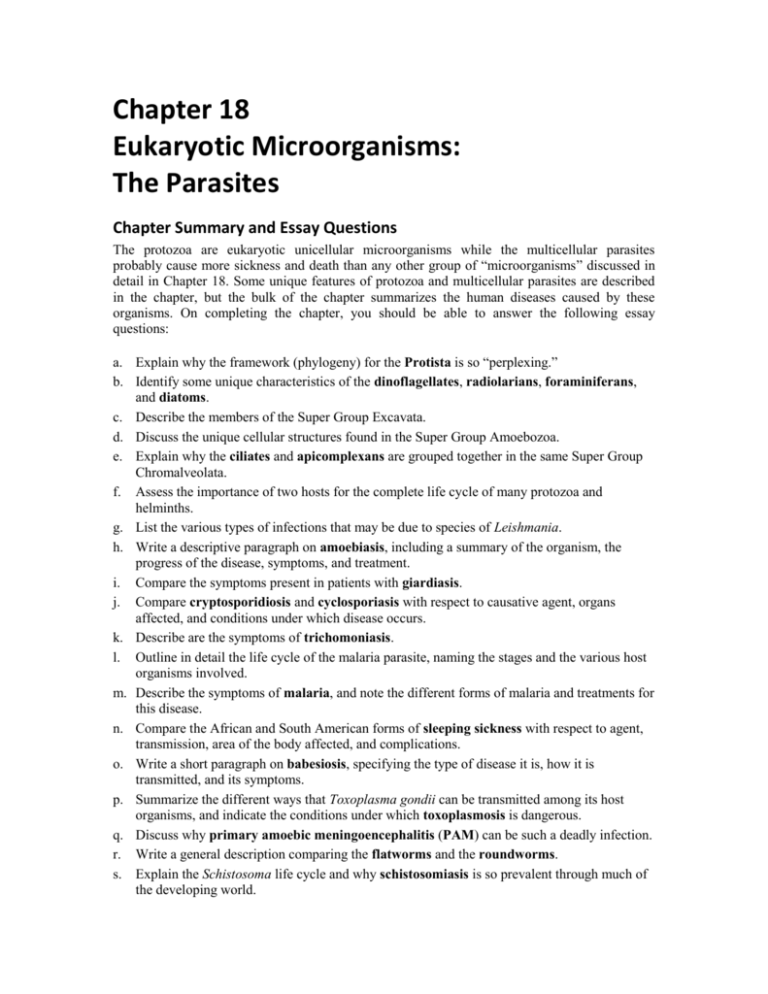
Chapter 18 Eukaryotic Microorganisms: The Parasites Chapter Summary and Essay Questions The protozoa are eukaryotic unicellular microorganisms while the multicellular parasites probably cause more sickness and death than any other group of “microorganisms” discussed in detail in Chapter 18. Some unique features of protozoa and multicellular parasites are described in the chapter, but the bulk of the chapter summarizes the human diseases caused by these organisms. On completing the chapter, you should be able to answer the following essay questions: a. Explain why the framework (phylogeny) for the Protista is so “perplexing.” b. Identify some unique characteristics of the dinoflagellates, radiolarians, foraminiferans, and diatoms. c. Describe the members of the Super Group Excavata. d. Discuss the unique cellular structures found in the Super Group Amoebozoa. e. Explain why the ciliates and apicomplexans are grouped together in the same Super Group Chromalveolata. f. Assess the importance of two hosts for the complete life cycle of many protozoa and helminths. g. List the various types of infections that may be due to species of Leishmania. h. Write a descriptive paragraph on amoebiasis, including a summary of the organism, the progress of the disease, symptoms, and treatment. i. Compare the symptoms present in patients with giardiasis. j. Compare cryptosporidiosis and cyclosporiasis with respect to causative agent, organs affected, and conditions under which disease occurs. k. Describe are the symptoms of trichomoniasis. l. Outline in detail the life cycle of the malaria parasite, naming the stages and the various host organisms involved. m. Describe the symptoms of malaria, and note the different forms of malaria and treatments for this disease. n. Compare the African and South American forms of sleeping sickness with respect to agent, transmission, area of the body affected, and complications. o. Write a short paragraph on babesiosis, specifying the type of disease it is, how it is transmitted, and its symptoms. p. Summarize the different ways that Toxoplasma gondii can be transmitted among its host organisms, and indicate the conditions under which toxoplasmosis is dangerous. q. Discuss why primary amoebic meningoencephalitis (PAM) can be such a deadly infection. r. Write a general description comparing the flatworms and the roundworms. s. Explain the Schistosoma life cycle and why schistosomiasis is so prevalent through much of the developing world. t. u. v. w. x. y. Identify the scientific names of the beef and pork tapeworms, and point out some symptoms of infection by each. Identify the unique structure characteristics of echinococcus. Describe pinworm disease and the significance of the infection. Write a paragraph on trichinellosis, explaining the structure and life cycle of the responsible parasite and how this disease can be prevented. Contrast the methods for transmission observed in the parasites of ascariasis and hookworm disease. Describe filariasis and the body system affected.
